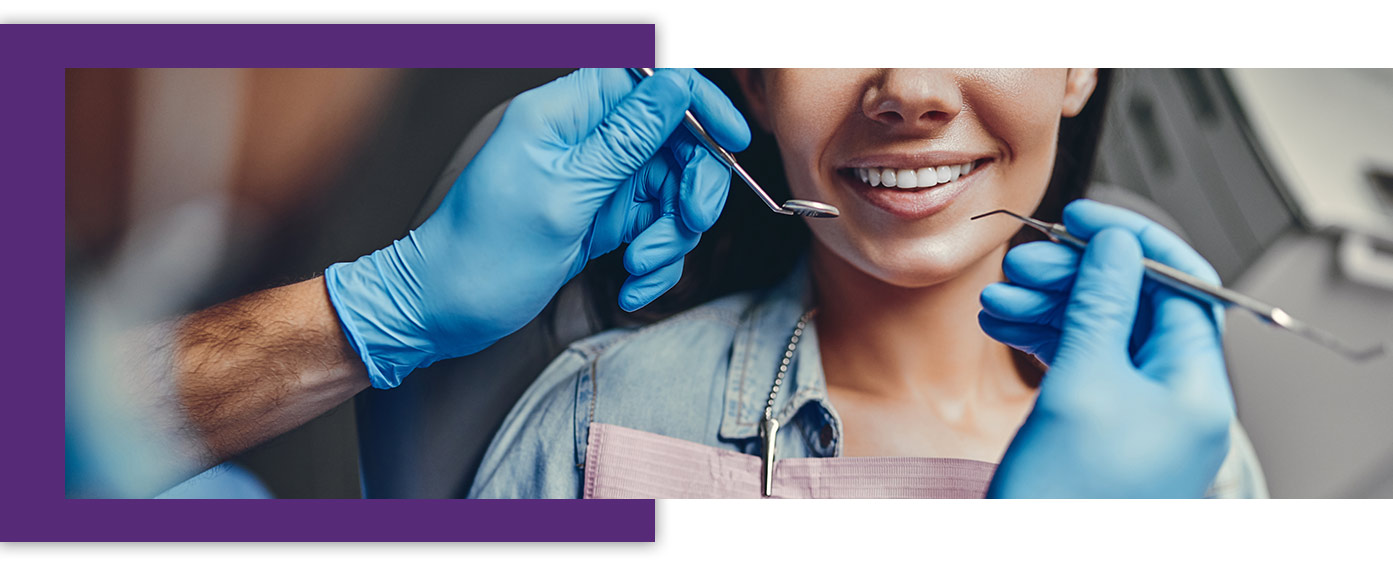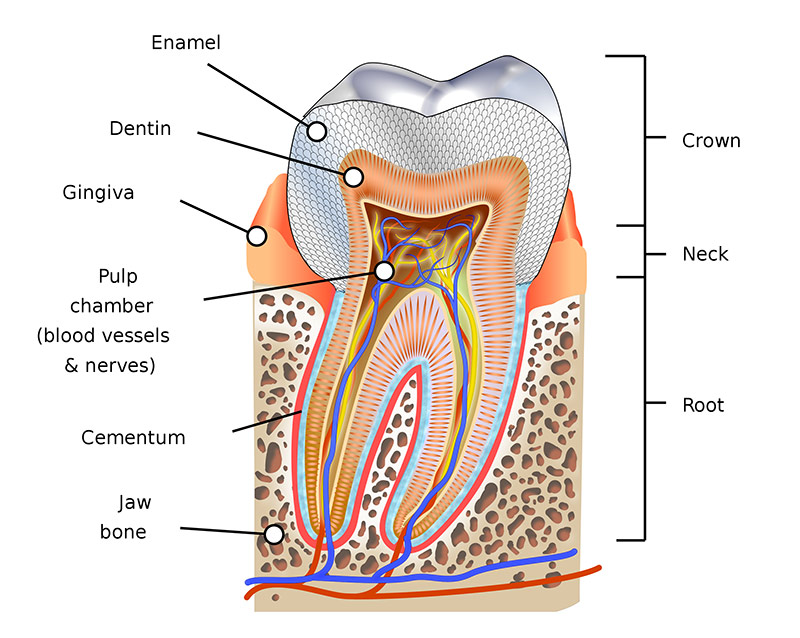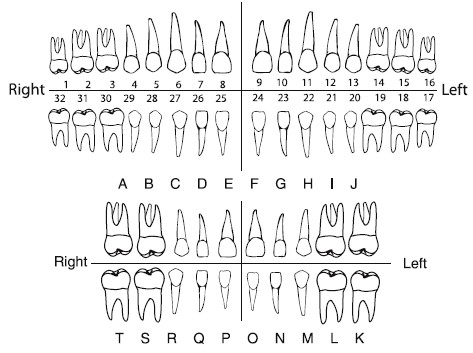
Dental Education
At birth people usually have 20 primary (baby) teeth, which often erupt through the gums as early as six months of age. These teeth are then shed at various times throughout childhood. By age 21, all 32 of the permanent teeth have usually erupted.
Anatomy of a tooth


Cusp – a cone-shaped prominence on the surface of a tooth, especially of a molar or premolar.
Crown – the visible part of a tooth.
Neck – the part of the tooth at the junction of the crown and root or roots. The line at which the cementum covering the root of a tooth and the enamel of the tooth meet.
Root – the anchor of a tooth that extends into the jawbone. The number of roots ranges from one to four.
Enamel – the tough, shiny, “white” outer surface of the tooth that is visible. Enamel is actually translucent and reflects the color of the dentin which is under ti. Enamel is the hardest substance in the body.
Dentin – the hard but porous tissue located under both the enamel and cementum of the tooth. Dentin is similar to, but harder than, bone.
Pulp (Nerve) – The soft center of the tooth. The pulp contains blood vessels and nerves; it nourishes the dentin.
Gingiva (Gums) – the firm pink flesh that covers the bones and surrounds the teeth.
Root Canal – the part of the pulp cavity lying in the root of a tooth.
Periodontal Ligament/Periodontal Membrane – the fibrous tissue between the tooth and the tooth socket. It holds the tooth in place.
Cementum – a layer of tough, yellowish, bone-like tissue that covers the root of a tooth. It helps hold the tooth in the socket. The cementum attaches the tooth tot he bone by a network of fibers known as the periodontal ligament.
Bone – the “alveolar” bone contains the tooth roots. It forms the tooth socket and provides the tooth with support.
Brushing & Flossing
Place a toothbrush beside your teeth at a 45-degree angle and gently brush teeth in an elliptical motion. Brush the outside of the teeth, inside the teeth, your tongue, the chewing surfaces and between teeth. Using a back-and-forth motion causes the gum surface to recede, can expose the root surface or make the root surface tender. You also risk wearing down the gum line. Continue this motion for 30 seconds per quad to a total of 2 minutes.
Floss removes plaque and debris that adhere to teeth and gums in between teeth, polishes tooth surfaces and controls bad breath. By flossing your teeth daily, you increase the chances of keeping your teeth a lifetime and decrease your chance of having periodontal (gum) disease and tooth decay.
Flossing is the single most important weapon against plaque, perhaps more important than the toothbrush. A toothbrush cleans the tops and sides of your teeth. Dental floss cleans between them. Some people use waterpicks, but floss is the best choice. Many people just don’t spend enough time flossing and many have never been taught to floss properly. When you visit your dentist or hygienist, ask to be shown.







